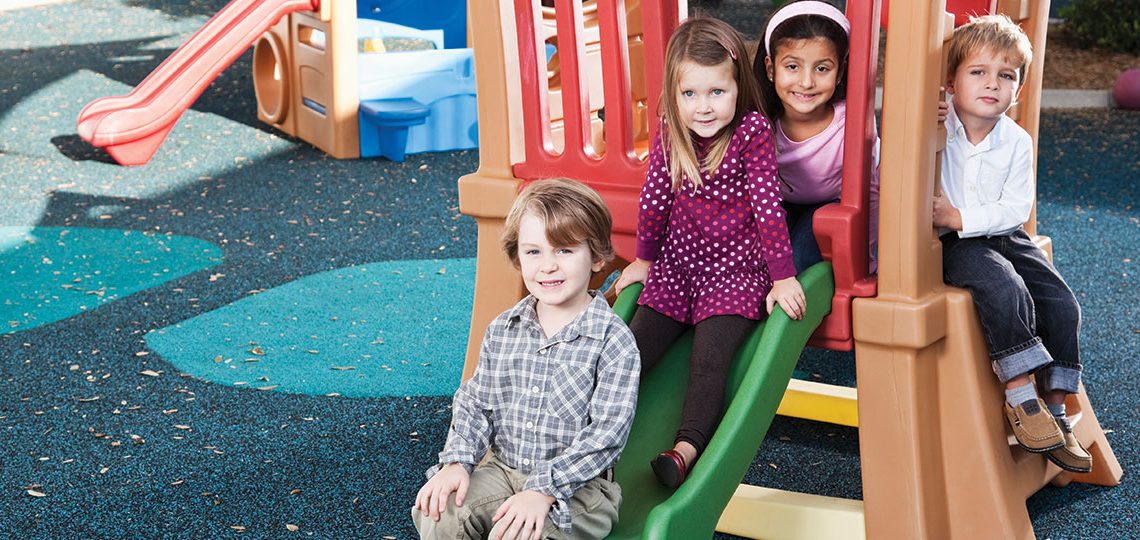UNDERSTAND RUBBER PLAYGROUND SURFACING PRODUCTS
Ethylene Propylene Diene Monomer, also known as EPDM is the other option for poured in place rubber surfacing granules. Outwardly, EPDM for surfacing looks identical to TPV. The truth is that it is a different product entirely. EPDM is made from virgin rubber, it is not a recycled product. The colors that are in EPDM are actually mixed into the rubber when it is in its liquid state, so the color is through and through. The biggest benefit of EPDM is its higher elasticity over TPV. On average, EPDM will be able to stretch 50% more than TPV before breaking. The other major benefit to EPDM is the fact that its surface porosity is still intact, this creates a stronger bond strength with resins over TPV. There are a few draw backs to the product as well. The first is UV color stability. Certain EPDM colors are highly susceptible to fading with UV exposure, much like when a plastic object is left outside and exposed to the sun. This problem is easily overcome by electing to use colors that are proven to be UV stable. The second detriment to EPDM is its cost. On average, EPDM is about 20% more per pound than TPV. All in all, EPDM is going to be a superior product for poured in place rubber surfacing, providing a better bond strength, higher elasticity and better impact absorption over TPV.
EPDM V. TPV PLAYGROUND SURFACING
When it comes to United States poured in place rubber surfacing, there are two types of granules that can be used for installation. Each has its own characteristics, pros and cons. Although both materials may look the same, they are not. It is important to understand how these products are manufactured and the differences between them when selecting the best material for your United States poured in place rubber project. Poured in place rubber surfacing is used in a wide variety of applications, from playground safety surfacing, to running tracks, on pool decks and patios and even in water parks and on cruise ship decks. The surface must be able to withstand a tremendous amount of wear and tear from foot traffic, the elements and most of all the sun. Let’s take a look at the two choices for rubber surfacing products, focusing on how they compare to each other.
TPV PLAYGROUND SURFACING
Thermo Plastic Vulcanized Rubber, also known as TPV has been used in the poured in place rubber surfacing industry since its inception in the early 1980’s. TPV is a term widely used in the plastics production industry, and in that respect has an entirely different purpose than the one we are discussing which is rubber surfacing. TPV for rubber surfacing is made by using recycled tires, through a process of heating and refinement to remove impurities such as grease and metals. The end result is a fine grained material between 1.5-5mm in average diameter. Strong dies are used during this process to add color to the granules. The end result of this process is a green product that can be used in a wide variety of surfacing products, including poured in place rubber surfacing.
TPV is not without flaw. Because of the processes used to make TPV, there are a few problems that come along with it. The first is elasticity. Over time, rubber becomes brittle. It loses its elasticity, or ability to stretch without breaking. Because of the fact that TPV is made from recycled tires, it is generally more brittle than its competitor, EPDM. The effect that this has on a finished surface is that it is more susceptible to shedding, or breaking away small pieces of rubber as the surface wears. It is also less versatile in terms of settling and shifting, opting to break under pressure rather than stretch. One benefit of TPV that manufactures claim is a superior color durability. Some manufactures claim that TPV color is less likely to fade with sunlight exposure versus EPDM. We have found this to be open to opinion. In any case, this claimed benefit also has a downside. TPV has microscopic pores. When dies and colorants are used to color the product, these pores get saturated and filled with the colorants. When the TPV is mixed with a resin or binder for a poured in place surfacing application, the binder is unable to saturate these pores, the end result is less adhesion, creating a poorer bond strength than would be created using the same binder on an EPDM product.

